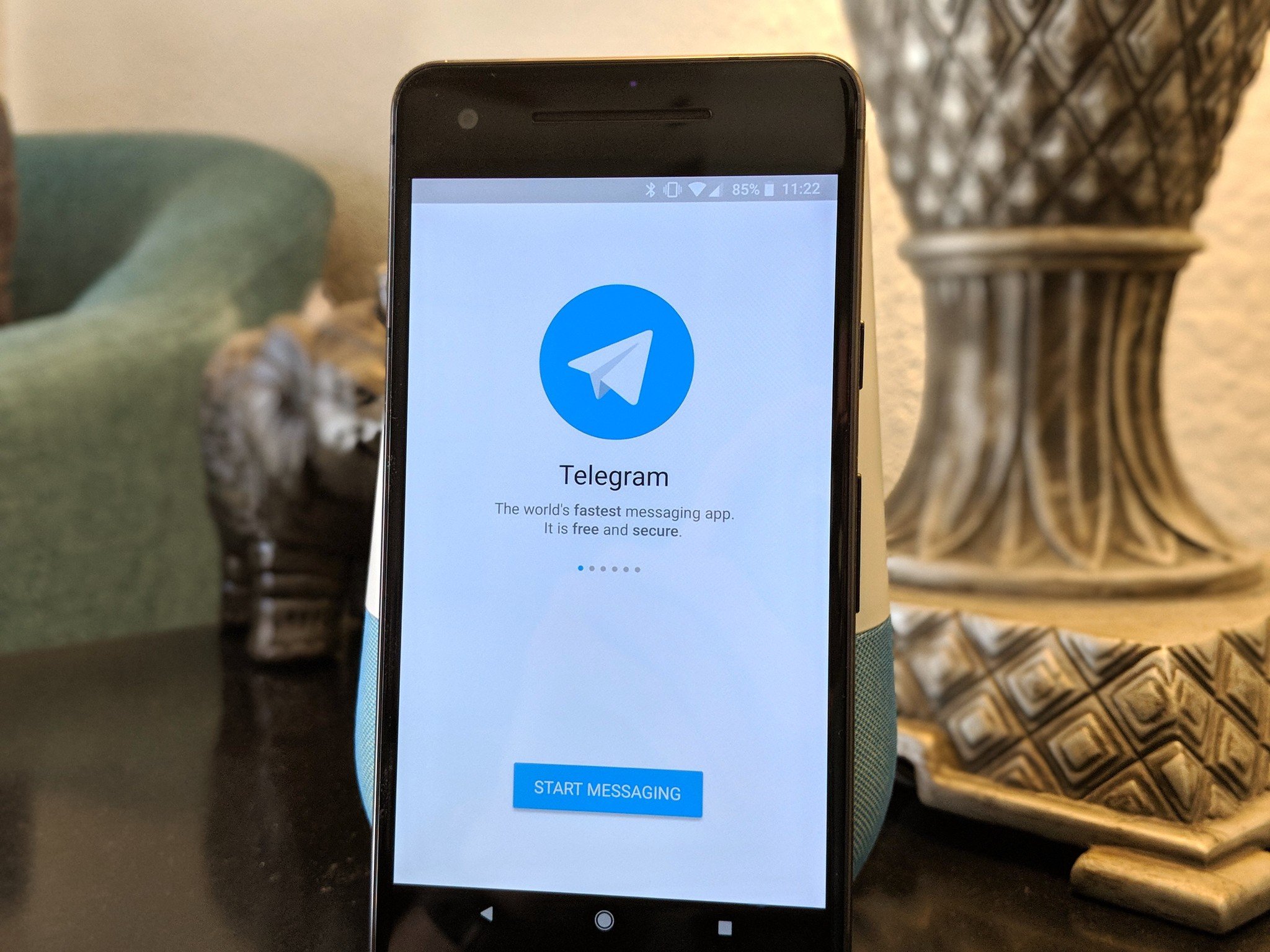Fake number hacks to protect your privateness on messaging apps fast
Fake quantity hacks to protect your privateness on messaging apps fast
Using a Telegram faux number has become a widespread practice among customers in search of enhanced privateness, safety, and adaptability inside digital communication landscapes. The ability to register and function a Telegram account without exposing one’s main phone number addresses important privacy concerns, helping customers circumvent risks of surveillance, spam, and information leakage. This article delves deeply into the technical, psychological, and sensible dimensions of employing faux numbers on Telegram, completely exploring its implications, advantages, and operational mechanics to equip users with expertly grounded insights.
Understanding the Role of Phone Numbers in Telegram
Telegram uniquely leverages phone number-based authentication to determine person id, enabling contact discovery and safe account creation. Unlike many messaging platforms that rely primarily on usernames or email IDs, Telegram requires a legitimate cellphone number to provoke the registration process. This protocol ensures a baseline belief mannequin, as cellphone numbers are sometimes tied to real-world identity, serving both practical and safety functions underneath Telegram’s end-to-end encryption and account recovery methods.
How Telegram Uses Phone Numbers for Authentication
Upon registration, Telegram sends an SMS or name verification code to the equipped telephone number. This course of leverages the proven two-factor verification principle combining one thing the person "has" (the telephone number/ device) with one thing the user "knows" (the verification code). This strategy mitigates unauthorized entry and ensures that accounts are linked to active, reachable telephone endpoints. Furthermore, the phone quantity anchors the user's identification to Telegram's distributed contact system, simplifying synchronization and social graph mapping among users.
Privacy Trade-offs and Risks With Using Personal Numbers
Despite the security benefits, sharing a private phone quantity on any public or semi-public communication medium poses significant privacy risks. Exposing your actual number may find yourself in targeted spam, unsolicited calls, and doxxing makes an attempt. Even with Telegram’s robust encryption, phone numbers can be exploited via metadata analysis to track user conduct or location patterns. Many customers thus search alternate options that let them preserve communication convenience with out compromising sensitive personal data.
The Concept and Mechanics of Telegram Fake Numbers
Transitioning from an understanding of Telegram’s reliance on telephone numbers, it becomes crucial to grasp how faux numbers integrate with the platform’s architecture. A pretend quantity usually refers to a phone number that is legitimate sufficient to obtain SMS or calls for verification but just isn't the user’s private or major number. These numbers may be short-term, reusable, or digital, created or rented through numerous service providers globally.
Types of Fake Numbers: Temporary, Virtual, and Burner Numbers
Temporary numbers are short-lived and normally expire after a single use or limited period, ideal for one-off Telegram registrations. Virtual numbers, additionally referred to as VoIP numbers, are assigned through web protocols without tying to bodily SIM cards, providing long-term usability with retained privateness. Burner numbers prioritize anonymity — discarded after use — enabling users to isolate communications linked to specific interactions or accounts. Each kind caters to distinct use circumstances balancing convenience, value, and lifespan to match various consumer wants inside Telegram.
Technological Foundations Behind Fake Numbers
Many fake numbers originate from SMS gateway services and telephony providers that provide programmatic entry to telephone numbers via APIs. These providers simulate actual cell network performance by enabling the sending and receiving of SMS or calls to digital endpoints. Advances in SIP (Session Initiation Protocol) and VoIP technologies enable seamless routing of verification codes from Telegram’s infrastructure to users controlling these phone numbers digitally. Understanding these technological underpinnings clarifies how Telegram manages to authenticate non-traditional numbers while maintaining its safe communication ecosystem.
Privacy and Security Implications of Using Fake Numbers on Telegram
Before employing a Telegram faux quantity, users should think about how this technique affects general account security and privateness safeguards. While faux numbers shield main identifiers, they introduce nuanced risks and benefits explored beneath.
Enhancing Anonymity and Protecting Personal Data
Using a fake number decouples your Telegram profile from private id, successfully obscuring your real cellphone number from contacts and potential adversaries. This will increase safety towards social engineering attacks and unauthorized information harvesting, especially important for whistleblowers, activists, and privacy-conscious customers. Telegram’s structure, when complemented by fake numbers, enforces a stronger boundary controlling who can trace communication endpoints again to the actual user.
Potential Pitfalls: Account Recovery and Trust Issues
However, pretend numbers may complicate account restoration processes if users lose access to these numbers, as Telegram’s restoration mechanisms rely closely on phone-based verification. Additionally, certain contacts or groups may deal with accounts linked to faux numbers with suspicion or lowered credibility due to perceived anonymity or spam potential. Selecting reputable suppliers for pretend numbers and maintaining control over them is essential to mitigate lockout dangers and protect belief in interactions.
Vulnerabilities Introduced by the Use of Low-Quality Number Providers
Low-quality SMS providers or publicly shared numbers may be exploited by malicious entities. Shared numbers threat interception of verification codes and potential unauthorized account seizures. Telegram’s safety model locations a premium on unique number management; thus, choosing paid, dedicated virtual numbers over free or broadly shared options considerably strengthens security posture.
Practical Benefits of Telegram Fake Numbers in Daily Use
Examining Telegram faux numbers from the user’s perspective highlights tangible advantages impacting privacy, convenience, and workflow.
Creating Multiple Accounts Safely and Efficiently
Telegram supports a number of accounts on one device, facilitating compartmentalization between social, skilled, or nameless personas. Fake numbers allow creation of secondary or tertiary accounts with out exposing the main telephone number, preserving privacy boundaries and reducing cross-account correlations. This performance benefits social media managers, online sellers, or people juggling distinct communication spheres.
Bypassing Regional or SIM-Based Restrictions
Certain countries or networks prohibit Telegram utilization, both blocking the app outright or associating telephone numbers with geo-based limitations. Using fake numbers, particularly virtual ones from different locales, circumvents these restrictions, allowing customers greater freedom of access. This practical workaround aligns with ongoing challenges posed by digital censorship and geo-blocking practices.
Spam Reduction and Control Over Incoming Communications
Deploying fake numbers means isolating potentially high-risk contact factors out of your primary quantity, bettering spam filtering and administration. Users can discard or rotate pretend numbers as soon as they attract spam or undesirable communication, thereby sustaining a cleaner digital environment. This capability enhances productiveness by minimizing distractions and preserving dedicated channels for focused communication.
Ethical and Legal Considerations Surrounding Fake Numbers on Telegram
Embedding privacy-enhancing instruments similar to fake numbers inevitably intersects with moral and regulatory frameworks. Understanding these boundaries aids customers in navigating each alternatives and obligations.
Legality of Using Fake Numbers
Most jurisdictions enable using virtual and fake numbers, offered they aren’t employed for fraudulent or dangerous purposes. Telegram itself does not explicitly prohibit registration with these numbers, but customers should comply with local laws governing telecommunication fraud, identity misrepresentation, and cybercrime. Using fake numbers to circumvent bans or interact in illicit activities can result in account suspension or authorized repercussions.
Balancing Privacy With Accountability
Fake numbers enhance privateness but can even allow anonymity that reduces accountability. This duality raises issues about misuse for harassment, impersonation, or dissemination of misinformation. Telegram users and directors should weigh the necessity for privateness in opposition to neighborhood standards and platform policies designed to prevent abuse. Implementing verification layers or utilization guidelines may help maintain a healthy ecosystem.
Choosing and Managing High-Quality Fake Number Providers
The success and safety of your Telegram expertise with fake numbers depend closely on the choice of number providers and effective account management.
Evaluating Provider Features and Reliability
Not all faux number providers offer equal high quality. Criteria such as quantity exclusivity, uptime, geographic coverage, delivery speed of SMS, and privacy policies are crucial to assess. Paid providers typically guarantee unique quantity project and robust service level agreements, enhancing security and person satisfaction in contrast to many free or semi-public alternatives.
Best Practices for Managing Telegram Accounts with Fake Numbers
Users ought to preserve detailed data of their fake numbers, keep away from number sharing, and disable two-step verification mechanisms that depend upon misplaced or inaccessible numbers without backup choices. Additionally, integrating Telegram’s passcode lock, two-factor authentication (2FA), and active session management options fortify account integrity beyond cellphone quantity control alone.
Security Measures Specific to Fake Number Accounts
Account holders must be vigilant in opposition to SIM swapping, number recycling, and unauthorized access to digital numbers. Ideally, they may rotate or substitute pretend numbers periodically, monitor login alerts, and avoid using the same faux number across multiple providers to reduce cross-platform attack surfaces.
Future Trends and Innovations in Messaging and Number Privacy
Looking beyond present practices, rising applied sciences are poised to reshape how platforms like Telegram handle telephone quantity verification and privacy preservation.
Decentralized Identity and Zero-Knowledge Proofs
Innovations in decentralized identification management, together with blockchain-based IDs and zero-knowledge proof protocols, promise to minimize back dependency on conventional phone numbers altogether. Such systems allow verifying user authenticity and uniqueness with out exposing any figuring out attributes, potentially rendering faux numbers out of date and elevating privacy requirements tremendously.
Integration of Anonymous and Ephemeral Communication Layers
Telegram’s ongoing enhancement of privacy features, corresponding to self-destructing messages, secret chats, and superior encryption strategies, suggests a trajectory toward more ephemeral and anonymous communication mechanisms. Coupled with dynamic telephone number allocation or absolutely virtual identity era, these improvements will further empower users to retain management over their digital footprint.
Regulatory Pressures and Adaptive User Behavior
Simultaneously, rising regulatory scrutiny regarding digital identities and traceability may influence how Telegram balances user privacy with compliance calls for. Users may need to adopt extra sophisticated instruments like faux numbers integrated with authorized identification frameworks to hold up anonymity whereas fulfilling accountability necessities.
Summary and Strategic Recommendations for Maximizing Telegram Fake Number Usage
Employing a telegram fake number faux number offers a complete solution for enhancing privateness, enabling multi-account flexibility, mitigating spam, and bypassing geographic restrictions. It addresses crucial ache points associated to exposing personal cellphone numbers in a rapidly digitizing, surveillance-prone surroundings. However, this approach requires cautious administration of number providers, understanding of security risks, and awareness of legal boundaries to keep away from unintended vulnerabilities or compliance points.

To maximize benefits from Telegram fake numbers:
- Choose reputable digital quantity providers with assured exclusivity and robust privacy policies.
- Implement Telegram Fake Number’s built-in safety features (2FA, passcode lock, logout management) to enhance pretend quantity anonymity.
- Maintain control over your pretend numbers, avoid sharing or reusing throughout critical platforms, and put together recovery options.
- Monitor for suspicious login exercise often and rotate numbers proactively to forestall compromise.
- Stay informed about evolving privacy regulations and platform policy modifications affecting virtual number use.
- Consider future-ready identification solutions as they mature, probably offering superior privacy with out counting on telephone numbers.
By integrating these finest practices, customers can harness the complete potential of Telegram faux numbers, attaining a safer, more private, and flexible messaging expertise aligned with trendy digital communication challenges.
